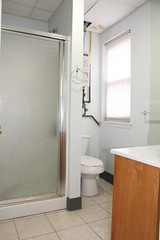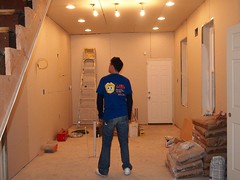2012, Better, The Same, Or Total Chaos?
Posted on Jan 10 in Free Educationby adminPrint

From www.costar.com
By Mark Heschmeyer
The commercial real estate world this year will look a lot like it did in 2011, according to CoStar newsreaders.
During the last few weeks of the year, we asked readers to give us your boldest, best predictions that you could take to Las Vegas and put money on. Based on that proposition, readers have decided that the best bets are going to be to ‘let it ride,’ expecting a continuation of current market trends.
Among the top expectations: Banks and servicers will continue to jettison the worst performing assets and seek to workout recapitalization opportunities on the better-quality assets. Similarly, institutional property investors will also continue to reposition their portfolios away from secondary markets in favor of core stable assets in primary metropolitan markets.
Multifamily properties will continue their hot streak as pent up and new demand will keep vacancies low and spur continued new construction and property retrofitting of older other property type buildings.
And, both U.S. political inaction/posturing in an election year and world economic uncertainty will continue to weigh down true recovery.
Just how safe are readers playing it? Here is what one reader jested: “It’s also possible I will get a year older, well, at least I hope so.”
Hoping that the New Year brings you good fortune and prosperity, here are more of our readers’ predictions for 2012; we’ve saved the boldest few for the very last.
Playing the Slots: Small Bets with Big Potential
Multifamily investments continue to rule the CRE landscape, investors seeking yield and upside from increasing renter demand and rising rents, in lieu of a continued weakening economy, limited job growth, and increasing global pressures from Europe. Best bets for multifamily acquisition will remain in coastal markets, urban city centers, transit-oriented live/work locations, and markets with solid job growth from tech, energy and health care.
Kevin Russell, Managing Partner, Gibraltar Commercial Properties, Culver City, CA
In the industrial market, rental rates will continue to trend upwards in the Miami Airport West submarket with positive absorption continuing. New spec development shall commence after four years of no new construction of industrial product.
George I. Pino, President, State Street Realty, Doral, FL
2012 will see continued yet slow incremental improvement in U.S. CRE markets. Secondary markets in Florida, California and Nevada will continue to underperform national averages for absorption and rental rate growth. Those markets hardest hit by foreclosures and high unemployment will continue to lag behind the primary markets through 2012 and 2013, with marked improvement in 2014-15. Institutional owners will continue to dispose of underperforming assets in the secondary markets focusing on primary U.S. and International CRE markets seeing the most growth.
Jeff Lamm, Associate, Industrial Property Group Inc., Tampa, FL
Because of the November 2012 elections and the accompanying uncertainty of tax policy, employer costs of health benefits, capital costs in a screwy global market the economy, lack of new jobs, consumer and corporate fear about spending, commercial real estate will remain largely stagnant. 2012 will be a good time to develop a new strategy and train the people who can execute the strategy. The majority of 2012 activity will again center on the sale of large distressed portfolios by lenders and core properties in 24/7 cities.
Susan Lawrence, President, CEO, Real Estate Strategies Inc., Winter Park, FL
In 2012 we will see modest to tepid growth while some investors and companies wait to see the results of the U.S. elections and the European Union. Core stable assets will continue to see low cap rates and high demand. Class A apartments will continue to experience strong investor demand and class B and C apartment performance will pick up some pace. Single tenant net lease and medical properties will continue to be sought after assets and cap rates in these sectors will compress in 2012. Office, industrial and retail performance growth will remain stable but low overall with the significant improvements concentrated in areas with strong job markets. Industrial will lead office and retail with improving performance related to e-commerce and lack of recent new construction.
Michael Bull, President & Founder, Bull Realty Inc., Atlanta, GA
My 2 cents on this subject is that the worst is clearly past us if you examine the major metrics, and that is corroborated by the sentiment on the street. An uptick in pricing can be seen in almost all markets and asset types, excepting the most distressed assets and locations. However, this optimism needs to be tempered by the fact that the 2007 CMBS vintage loans are all maturing over the next 12 months, and since this vintage entailed the worst underwriting standards, it stands to reason there will be plenty of work left to do for CMBS special servicers.
A.J. Beachum, Senior Sales Associate Income Property Organization, Bloomfield Hills, MI
Overall, the investment real estate market will be flaccid in 2012, by-and-large because it’s an election year. The best values will be had in the fourth quarter of 2012 and first quarter of 2013, as the meek will be sitting on the sidelines during the regime change. Hub-area industrials will gradually gain strength, spurred on by local government incentives and gradual growth. The Better Buildings Challenge will continue to gain grassroots momentum until Congress finally gets on board.
Jodi Summers, Founder of The SoCal Investment Real Estate Group, Sotheby’s International Realty, Los Angeles, CA
Urban retail rental rates in Philadelphia will most certainly increase. That will also be the case for the other major metropolitan marketplaces in the U.S. Most residential apartment developers and even select condo developers have continued to adaptively re-use or even build ground up, properties in urban settings. The main factors in this are that hospitals, schools and law firms are jam packed with students, patients, and workers and they continue to grow each year.
Stephen J. Jeffries, Partner & Co-Founder, Precision Realty Group, LLC, Philadelphia, PA
For 2012, in Phoenix, I see more transaction velocity in the retail and industrial segments. Rents are at or close enough to a bottom in both of those segments. Prices are starting to match up to the new rent amounts and are under replacement costs in most cases. Investors are starting to feel more confident that if they buy today (or in 2012) that the holding period of a flat/negative cash flow will be at a minimum with good opportunities of improved cash flow in the near term.
Nicholas L. Miner, Vice President – Investments, Commercial Properties Inc., Scottsdale, AZ
We anticipate below 1-percentile fluctuations in vacancies for retail, office and industrial as well as multifamily markets. But the multifamily market has gained the game momentum of late and this trend will continue into 2012. There are more and more households becoming lessees – the American Dream is on the move. One enjoyable see saw sector will be the hotel/hospitality market where the tourism industry has suffered significant declines, yet these products are fit for the market fluctuations so there may be some retrofitting to satisfy the growing multifamily appetite.
Brian Merzlock, Valuation Manager, Williams & Williams, Tulsa, OK
Black Jack: Riskier but Holding
The 2012 forecast is mired in uncertainty in large extent due to a very high complex emergent world economy adapting to increasing public and private debt of over 80 trillion. With world GDP at just over 50 trillion, the world will be challenged to grow out of this global debt crisis. Both income property and single-family real estate debt remains at a high risk of default in the U.S. for 2012 for debt extended from 2004 through 2007. New debt extended in 2010, 2011 and into 2012 at conservative underwriting will be good investments. Not rosy, but a reality.
Marc Thompson, Senior Vice President, Manager of Senior Housing and Care Lending Group, Bank of the West, San Francisco
Functional obsolescence will be the coming opportunity. Arthur Nelson at VA Tech says that huge amounts of existing real estate is functionally obsolete and needs to be rebuilt. His estimates are as follows:
Type: Existing Amount — In Need of Replacement
Residential: 146 billion SF — 37 billion SF
CRE: 63 billion SF — 44 billion SF
These numbers seem almost unbelievable but the point remains salient. There is a ton of functional obsolescence out there. Whether it’s the ranch home, the dead mall or the Main & Main, single-story office building, older product in great locations needs to be upgraded to modern standards.
Jeffrey DeHart, Manager, S. J. Collins Enterprises, Fairburn, GA
Look for the government(s) to be the biggest active player in virtually every market in the USA during 2012 as they shed properties and try to right size their respective ship(s).
Dan Colton, Principal, Colton Commercial, Tempe, AZ
We will see a “tsunami of product” coming to the market from community banks in 2012. The market will clear itself as supply and demand come into equilibrium in 2013/2014.
Matt Ochalski, Managing Member, GD Realty LLC, Chicago, IL
Long Shots: The High Rollers
The election will look increasingly foregone. The Fed will lose control of inflation. Sunk under its low yielding and inflation-pounded T-bill assets, it will be folded into government like the GSEs. Inflation fear causes the public to run from the dollar. When gold tops $3,000 the White House & Senate propose a buy-back program at $1,500 and a renewal of FDR’s ban on public gold ownership. House prices take off…
Charles Warren, Principal, Warren & Warren, San Francisco
In 2012 Fannie Mae and Freddie Mac will begin to bulldoze excess housing inventory in an effort to support prices and the empty spaces will become community gardens.
Walter Brauer, Associate, Marcus & Millichap, Encino, CA
1. Banks will not renew many commercial loans and will begin foreclosing on properties that are poor locations/designs based upon new market realities.
2. Spike in bank collapses & closures in 2012.
3. Large, major cities will thrive with new CRE projects: NYC, SF/Bay Area, Chicago, Miami, LA.
4. Increased density and urbanization of cities, sprawl reduced.
5. Transit oriented development projects thrive, convenience is the key.
6. Creative, new mini-cities will spring up in Plains states.
7. Government finally curtails spending, Feds stop printing dollars and stop propping up stock markets, and the GNP/GDP returns to normal, lower level.
8. CRE assets decline 20%.
9. Europe monetary system collapses.
9. U.S.-based international companies grow substantially.
10. The working and non-working poor take over empty houses and commercial buildings.




































































